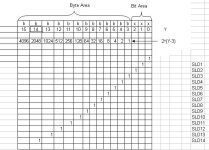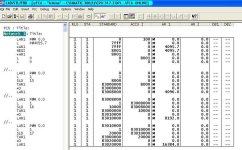manmeetvirdi
Member
OK if code is ...
LAR1 P#M 0.0
L N
SLD Y
+AR1
Now AR1 is pointing to byte Nx2^(Y-3) of M address area.
Maximum possible value of Y is 14, and the minimum value is 3.Because if less then 3 then it comes to bit area of the pointer.
Question is why the maximum value of Y is 14 (when N=1), it should be 15.


LAR1 P#M 0.0
L N
SLD Y
+AR1
Now AR1 is pointing to byte Nx2^(Y-3) of M address area.
Maximum possible value of Y is 14, and the minimum value is 3.Because if less then 3 then it comes to bit area of the pointer.
Question is why the maximum value of Y is 14 (when N=1), it should be 15.








